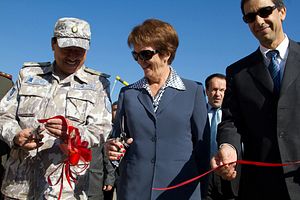On April 6, the U.S. Department of State’s Office of the Inspector General quietly released a sensitive but unclassified report from March after an inspection of the U.S. Embassy in Dushanbe, Tajikistan. The Ambassador gets high marks, but the embassy is plagued by staffing gaps and tight procedures that have “undermined confidence that the embassy provides a full and reliable picture of local developments.”
Washington consumers canvassed in the survey noted concern that embassy reporting lacked credibility. Officials in three bureaus questioned whether information critical of the government and military was appropriately included in reports. The OIG team compared the notes of meetings and initial drafts of cables with the versions the Ambassador approved and found no pattern of distorting information, only a reluctance to report unsubstantiated or unprovable allegations of human rights abuse.
The OIG is rather charitable, commenting that information was kept out of final cables because the allegations of human rights abuses were unsubstantiated. The report goes on to counsel the embassy, however, to report information from nongovernment sources on possible human rights abuses along with an assessment of their credibility, rather than omit the information it receives altogether. Citing the Leahy amendment, which bars assistance to security forces that have been involved in human rights abuses, the message is clear: send the information to Washington and that is where the determination will be made.
Though the report does not directly refer to the 2012 Khorugh incident, the Tajik special forces units involved in the killing of about 20 civilians in the summer of 2012 had likely been trained by the U.S. Military assistance to Tajikistan has increasingly been funneled through the State Department, under the guise of counterterrorism, counternarcotics, and border control.
One of the most interesting numbers in the OIG report is telling in this regard. Of the embassy’s approximately $84 million in funding, more than 50 percent comes from the Department of Defense. Not only is the Pentagon bankrolling the embassy in Dushanbe through the Office of Military Cooperation (to the tune of $34 million in 2014), but Special Operations Command has seven U.S. direct-hire staff at the embassy and $10 million in funds to itself. For comparison, State funding for the embassy supports 314 total staff (41 U.S. direct-hire) on $13 million.
U.S. relations with Tajikistan are built on security matters: the war in Afghanistan, border control, and counternarcotics dominate the relationship. The embassy “provides $700,000 annually in salary supplements to Tajikistan’s drug control agency” to deal with narcotics moving north from Afghanistan, where poppy production is back with a vengeance. Overall the U.S. spends $7 million on narcotics and law enforcement programs in Tajikistan.
For its part, Tajikistan seems to be stymieing the embassy’s diplomatic efforts by tightening limits on engagement with Tajik government officials in 2014. In order to approach any government agency in the country, U.S. diplomats must receive advance permission from the Ministry of Foreign Affairs. While the government of Tajikistan eschews deeper diplomatic interaction, it more than welcomes military assistance.
As Joshua Kucera points out on Eurasianet, the report’s criticism of the embassy’s lack of credibility is pretty strong, but the OIG “doesn’t address the real questions: what the investigation ultimately determined, what the role of U.S. aid in the Khorog violence was, and whether the U.S. has changed its military aid policies as a result.” Hopefully, these subjects are covered in the classified annex but in the meantime, it does not seem that U.S. policy toward Tajikistan will be changing anytime soon.
In March, General Lloyd Austin, Commander of U.S. CENTCOM, testified for two congressional committees regarding his command’s force posture. Of Tajikistan he said very little, noting that the U.S. relationship with the country was “advancing steadily in spite of significant Ministry of Defense leadership changes and growing security concerns” and that the U.S. continues to “assist the Tajiks in developing the capacity to meet a variety of CT, CN, and border security challenges, while also supporting their development of a peacekeeping capability.”
Deputy Secretary of State Antony J. Blinken, speaking at the Brookings Institution in Washington D.C. last week, also had very little new to say about Tajikistan, echoing the standard line that the in Central Asia’s poorest country the U.S. is “focusing on improving border security, strengthening the capacity of law enforcement, and countering terrorism along the nation’s long and porous border with Afghanistan.”
As Casey noted in a recent article, “in lieu of innovation or revamp, Washington appears content to continue along the muddled path it’s followed prior, with stale plans and retread ideas bundled once more.”

































